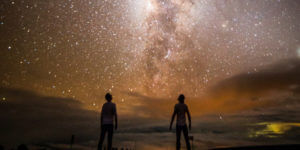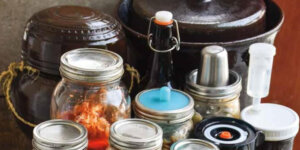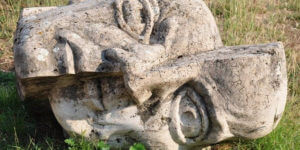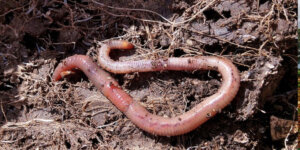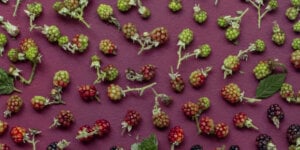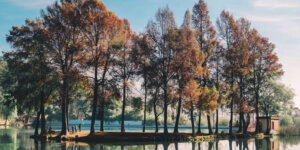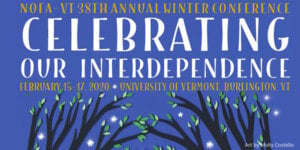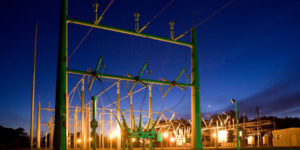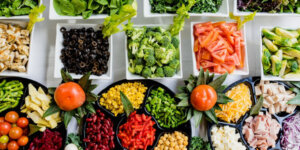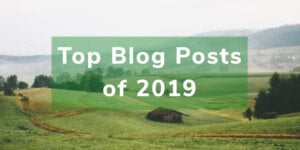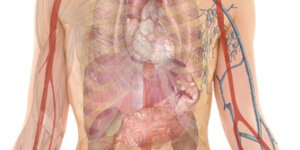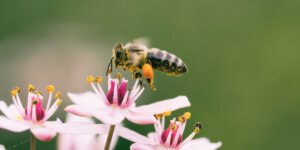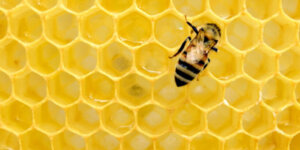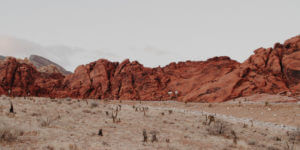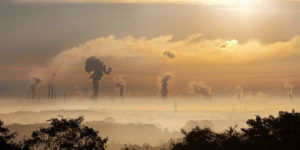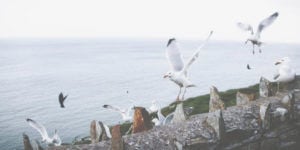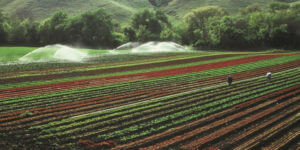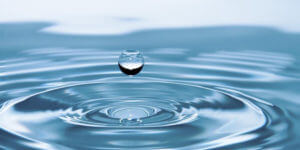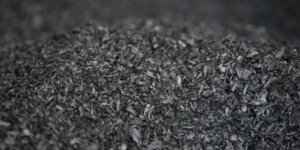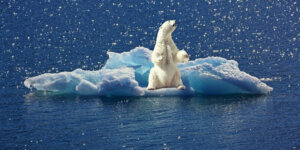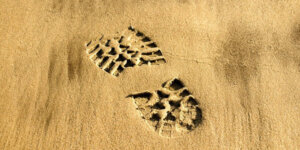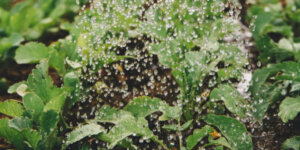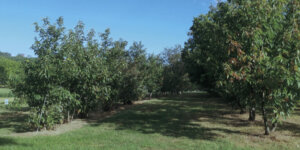Chelsea Green Blog
Nature & Environment
Fermentation 101: Just Add Salt
Fermentation isn’t just for highly skilled experts, at its core, fermentation is actually pretty simple. Once you’ve mastered the basics of fermentation, you’ll be on your way to creating delicious and unique dishes in no time! The following is an excerpt from Wildcrafted Fermentation by Pascal Baudar. It has been adapted for the web. For…
Read MoreWho Is the Wild Twin?
All of us have a wild twin––a part of ourselves that we generally shun or ignore to conform to societal norms. Inviting the wild twin back into our consciousness is crucial, for they have something important to tell us. The following is an excerpt from Courting the Wild Twin by Martin Shaw. It has been…
Read MoreVermicomposting: Why Venture Into It?
If you’re at all in tune to the agricultural news of late, you’re well aware that soil health is in decline all over the world – an issue that is having a disastrous impact on our food systems. The answer to this international problem? Worms. Lots of them. But how, you ask? Well, vermicomposting, of…
Read MoreOn Foraging and Picking Wild Plants
Foraging for your own food limits your carbon footprint and helps to maintain the natural landscape. Done correctly, it reconnects us to nature while limiting our impact on our natural surroundings. Humans need to be an active part of changing the environment—even on this small scale. The following is an excerpt from Wildcrafted Fermentation by…
Read MoreTrees: The Fountains of Life
Trees. They are all around us. They come in all sorts of different shapes, sizes, and colors. They each have a unique scent, a unique feel, a unique purpose. But have you ever really thought about what immense life forces they are? How much power they hold and how much they give to us? The…
Read MoreNOFA-VT 38th Annual Winter Conference: Celebrating Our Interdependence
NOFA-VT seeks to convene, to reunite, to connect, and to imagine how we might come together to build a food system for the future. This February 15-17th join NOFA-VT and several of our authors for the 38th Annual Winter Conference at the University of Vermont. Each year, the NOFA-VT Winter Conference provides a valuable opportunity…
Read MoreThe Birth of Electricity
Electricity has shaped the modern world. But how has it affected our health and environment? Scientist and journalist Arthur Firstenberg tells the story of electricity in a way it has never been told before—from an environmental point of view—by detailing the effects that this fundamental societal building block has had on our health and our…
Read MoreThe Science Behind Food Preferences: More Than a Matter of Taste
You might remember being a little kid and refusing to eat the broccoli that was put on your plate. But now you can’t get enough of the delicious green veggies. Why is it that your food preferences change over time? Why do you love some foods and despise others? What causes one person to love…
Read MoreDr. Lynn Margulis: The Last Conversation
Lynn Margulis was an evolutionary theorist, biologist, and science author. Two of her most significant achievements are the development of a new evolutionary theory, symbiogenesis, and the development of the Gaia Theory with James Lovelock. Margulis also wrote several books in collaboration with her son, Dorion Sagan. Lynn Margulis passed away in late November 2011.…
Read MoreOur Top Blog Articles of 2019: A Look Back
Ah, 2019 – how the time flies! The end of the year is always a little bit nostalgic, and as the year comes to an end, we’re taking stock of what our community has found most useful. If there’s one thing (or two) we know about our readers, it’s that they love growing food and…
Read MoreConscious Eating: What Our Bodies Are Trying to Tell Us
When our stomachs growl, we eat. When we feel like we’re about to burst, we stop eating. These are just two examples of our bodies’ incredible ability to recognize and adjust to changes within our environment and ourselves. Sometimes our bodies even know what’s best for us before we do. The following is an excerpt…
Read MoreSpeaking for the Bees
“Having a relationship with the rest of nature is knowing that we can, if we wish, rekindle our lost connections, because somewhere deep inside us all, there lives a little spark of ‘wild’ just waiting to be ignited.” —Brigit Strawbridge Howard Our planet is home to at least 20,000 species of bees—a statistic most of…
Read MoreAdding Our Voices to the Global Climate Strike
By Jill Kiedaisch, Content and Brand Manager “If I have to face up to the reality of climate change as an 11-year-old, then so do you.” The words of one of the countless youth speakers who shouted into microphones at “5,800 events in 163 countries” around the world last Friday, September 20, 2019. Millions of…
Read MoreHope for a Thirsty World
Judith D. Schwartz is a journalist whose recent work looks at soil as a hub for multiple environmental, economic, and social challenges and solutions. She writes on this theme for numerous publications and speaks at venues around the world. Her 2013 book Cows Save the Planet was awarded a Nautilus Book Award Silver Prize for…
Read MoreCool It Down: Using Fire to Cool the Earth
Albert Bates is one of the founders of the intentional community and ecovillage movements. A lawyer, scientist, and teacher, he has taught village design, appropriate technology, and permaculture to students from more than sixty countries. Kathleen Draper routinely collaborates with biochar experts from around the globe as a board member of the International Biochar Initiative…
Read MoreNotes on Gull Watching and Trash Picking in the Anthropocene
“An important and entirely brilliant book. It’s a love letter to gulls and their charged relationship with humans, but it’s also a deep meditation on difficulty and waste, on the beauty of the disregarded, and on what we make of matter out of place. There’s love and death here, fear, fascination, hope, and the breaking…
Read MoreMinerals in Your Farm’s Water
Minerals from soil and outside water sources find themselves in irrigation systems. When you water your land, these minerals infiltrate the soil and change its composition. Your plants are more impacted by their presence than meets the eye, but what exactly is the relationship? The following is an excerpt from Water in Plain Sight by…
Read MoreWater Connects Us All
Water is always changing and impacting the environment around it; storms form, droughts occur, and floods damage. It seems that the level of water on Earth is bouncing between extremes. These shifts are tied to the state of our climate. In the past, climate change seemed like a far-off concept; now it’s becoming more present…
Read MoreHow to Make Biochar
For something that looks like a lump of charcoal, biochar certainly has a great press agent. The subject of books, articles, blog posts, research papers, workshop presentations, conference talks, and various top-ten-ideas-that-will-change-the-world lists. Its potential ability to address a variety of global challenges is indisputably large. So, how exactly do you make this strange material?…
Read MoreDepressed about Climate Change? Here’s How to Take Action
The facts about climate change are settled. Mostly. In fact, the news seems to get worse, and more urgent, every day. Yet, the more the facts stack up, the less resolve many people seem to have about getting behind solutions that will stem, or turn, the tide. What gives? Economist and psychologist Per Espen Stoknes…
Read MoreCreating a Better Earth & Future: Overshoot & Collapse
The environment can only take so much gas emission, over farming, and plastic. What can you do to minimize your human footprint and take care of the earth? Start by looking around you. The following is an excerpt from 2052 by Jorgen Randers. It has been adapted for the web. It is important to know…
Read MoreThe Miracle of Farming: Toward a Bio-Abundant Future
Farmers have a close relationship with nature, seeing life cycles happen right in front of their eyes marvel in what the earth can produce. We wouldn’t survive without their help. Appreciating farming in the natural world, giving what it needs in order to flourish and providing the essentials to survive is an important process. There’s…
Read MoreThe Epic Saga of the American Chestnut
The American chestnut may well be the greatest and most useful forest tree to ever grow on this Earth. Its decline is considered by many ecologists to be one of the greatest ecological disasters to strike the US since European contact. But how did it happen? And are we on track to bring back this…
Read More
